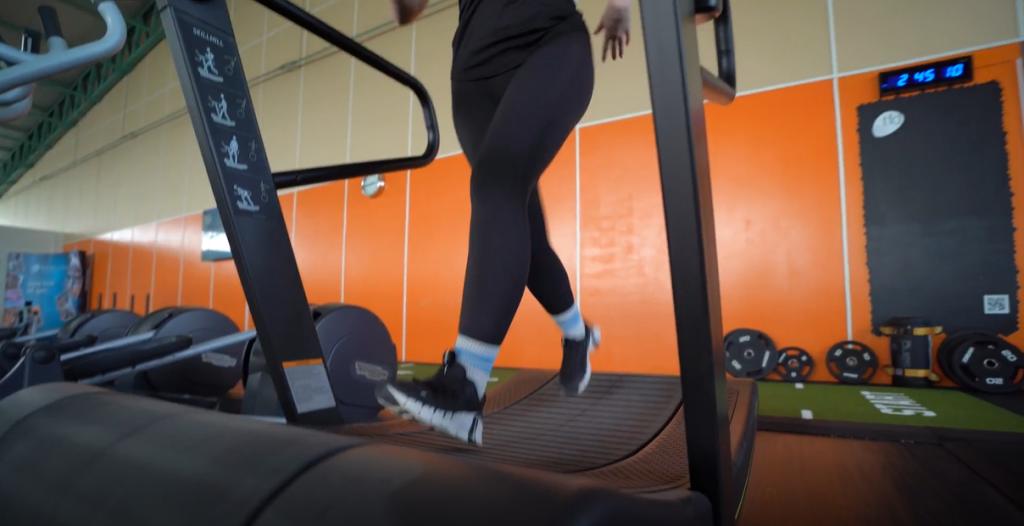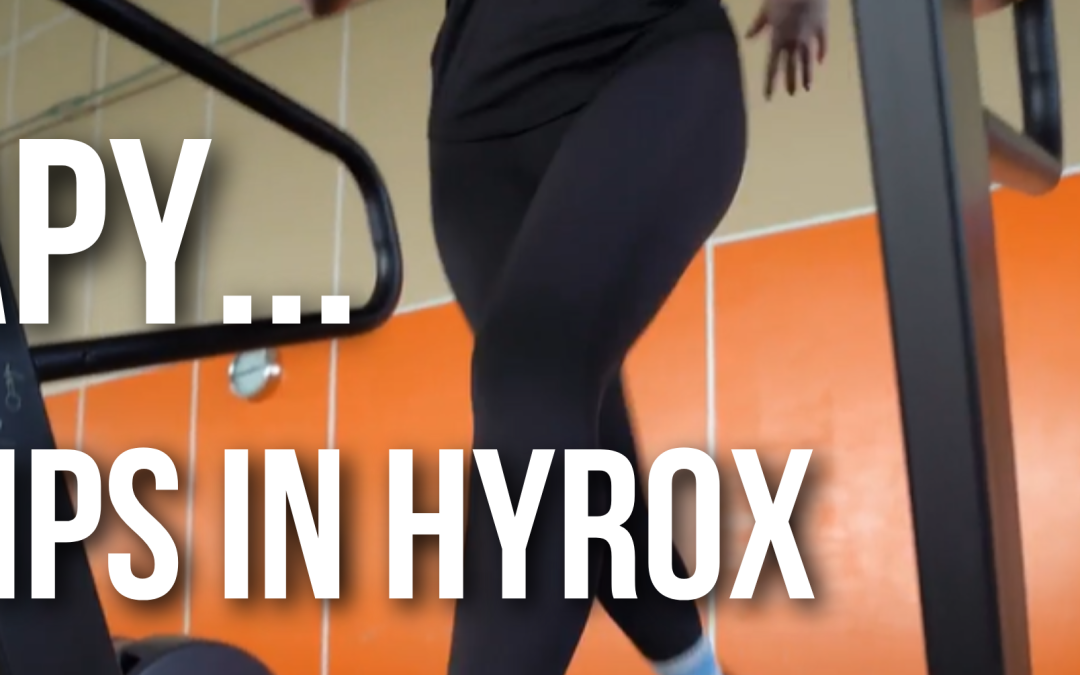Hyrox is a full-body challenge that blends endurance, strength, and grit. With 1km runs separating each of the eight functional stations, athletes are constantly shifting between movements that demand both mobility and power. If they become tight, your hips can be a limiting factor to your performance.
In this blog, we’ll explore tight hips: what they mean for your race, why you get tight hips, how TFD Therapy can help, and what you can do to keep them moving freely.
How Tight Hips Affect HYROX Performance
When we say “tight hips,” we’re talking about restricted mobility in the muscles surrounding your hip joint — often stiffness or tension in the front, side, or back of the hip, linked to muscles like the hip flexors, glutes, and tensor fasciae latae. This restriction can make Hyrox movements more difficult and less efficient.
Parts of the race that can be affected by tight hips include:
- Reduced stride length when running
- Difficulty hitting adequate depth in wall balls
- Struggling to get the knee to the floor during lunges
- Slower, less efficient “get-ups” during burpee broad jumps
Tight hips aren’t just uncomfortable — they can affect biomechanics, reduce efficiency, place extra strain on the lower back, knees, and hamstrings, and ultimately add time to your Hyrox race.

Why You Get Tight Hips
Tight hips can develop for a variety of reasons. While HYROX training itself places significant demands on the hips, other factors play a role:
- Anatomical Differences: Everyone’s body structure is slightly different, which can naturally affect mobility and range of motion.
- Lifestyle Factors: Long periods of sitting (e.g., office work, driving) keep the hips in a flexed position, gradually reducing mobility.
- Training Load: A sudden increase in high-intensity running, squatting, or lunging without sufficient mobility work can cause tightness to build.
- Previous Injuries: Scar tissue or altered movement patterns after an injury can limit hip range.
- Muscle Imbalances: Weakness in the glutes or core can lead to overuse of the hip flexors and other surrounding muscles, increasing tension.
The Treatments Available at TFD Therapy for Tight Hips
At TFD Therapy, we know that every athlete moves differently, has their own anatomical structure, and responds differently to training loads. We tailor treatment to these differences, aiming to restore mobility, reduce discomfort, and keep you race-ready.
Soft Tissue Therapy & Sports Massage
Hands on treatment that targets tension in the hip flexors, abductors, hamstrings, and surrounding areas to improve flexibility and reduce stiffness.
- Sports Massage: Deep tissue techniques to release muscular tightness and improve blood flow, helping restore hip mobility.
- Dry Needling: Targets specific trigger points to improve muscle relaxation and range of motion.
- Dry Cupping: Helps lift and loosen tissues surrounding the hips, improving circulation and relieving deep-seated muscle tightness.
- Stretch Therapy: Assisted stretching that can’t be achieved alone, designed to open up the hips, improve range of motion, and enhance movement efficiency.
Exercise Rehab
We guide you through mobility and strengthening exercises to restore movement and reduce the risk of hip tightness returning.
Movement Screening & Gait Analysis
We can assess your running, squat, lunge, and burpee mechanics to identify changes that could improve efficiency and reduce tension on the hips.
Education & Self-Management
We help you understand why the tightness developed, how to prevent flare-ups and what stretches or mobility drills to use in your warm-up and cool-down.
General Advice on Managing Tight Hips
- Stay Mobile: Include hip stretches and mobility drills in your warm-up and cool-down routines. (Make this a daily habit – real improvements in hip range of motion come from consistent work.
- Move in Different Planes of Motion: Include lateral and rotation movements in your training as well as the more traditional “forwards and backwards” gym movements.
- Mix in Strength Work: Strengthening your glutes, hamstrings, and core can help your hips move more freely and withstand race demands. You can also use weight to push deep ranges of motion further than you could without weight (Never force a stretch using weight). – For example, holding barbell back squats at the bottom for 203 seconds helps lengthen the hip muscles under load.
- Avoid Long Static Positions: Break up sitting time with short walks or mobility drills throughout the day.
- Warm Up Before HYROX Training: Use dynamic movements like leg swings, walking lunges, and glute activation work to prime your hips. – A proper warm-up can make a huge difference in performance.
- Recover Well – Use foam rolling, massage, and active recovery days to help your hips reset between sessions – Let us handle your recovery by booking in Sports Massage sessions with TFD Therapy!
- Progress Gradually – Build training volume and intensity steadily to avoid overloading the hips too quickly. – This is especially important for the running element of HYROX.
Final Thoughts
Tight hips can slow you down, affect your running form, and make functional stations feel heavier than they should. The good news? With the right approach, you can improve mobility, boost efficiency, and reduce discomfort.
At TFD Therapy, we’re here to help you move better, recover faster, and compete at your best. Whether you’re gearing up for your first HYROX or chasing a personal best, our team can help you keep your hips race-ready.
Book your appointment today and feel the difference in your next training session.

